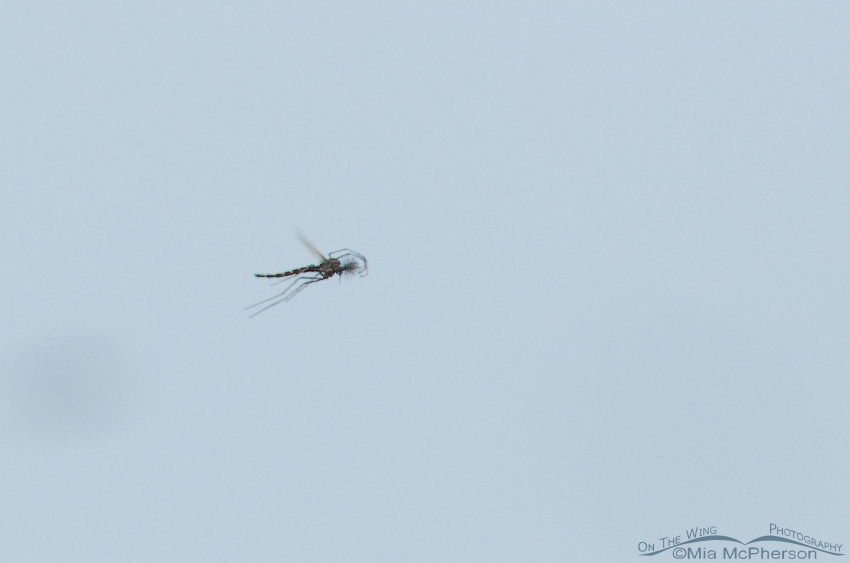 A Single Midge
A Single Midge
Midges are an important food source for the birds that live and breed in the marshes and wetlands of Utah and they have recently begun to hatch. I captured a frame where I could zoom in on a single midge the other day and wanted to share it. It might look a little like a mosquito but they do not bite and they do not make the buzzing noise that mosquitoes do. You can hear them if you stop and listen near the columns of midges you can find at Bear River Migratory Bird Refuge.
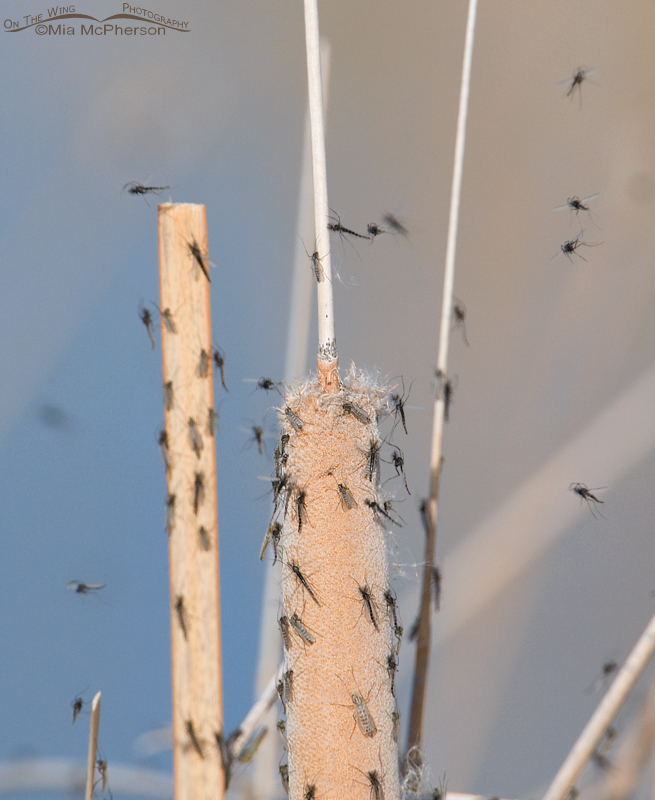 Midges on Cattails
Midges on Cattails
I don’t know if there are two or more species of midges in this image or if they are all the same species but I see some that are smaller than others, some that are grayer and some that are much darker than others that are near them as they rest on cattails.
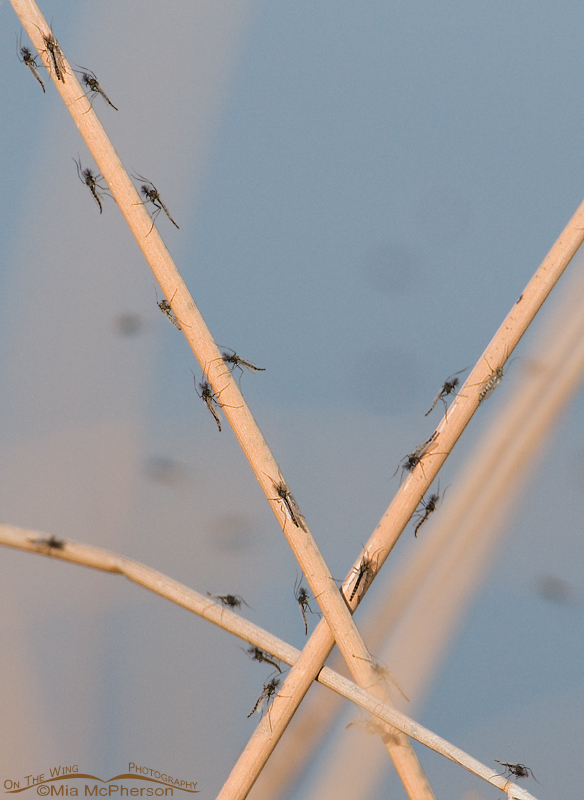 Midges on Rushes
Midges on Rushes
This is another close up of midges resting on rushes at Bear River. Next to the road; which is very close to the water, the vegetation can be covered with midges. The midges do swarm around the cars on the auto tour route and they can tickle when they land on bare skin but they don’t bite.
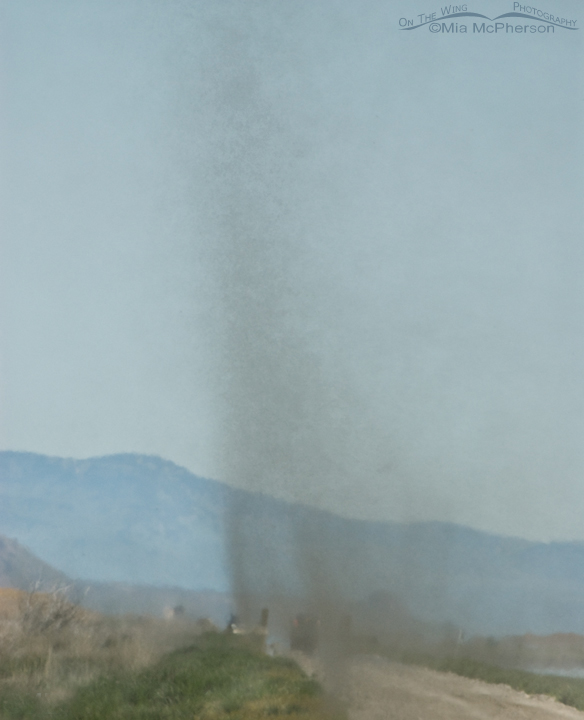 Midge Tornadoes
Midge Tornadoes
I’ve posted this image before on a post I published two years ago titled “Midges and Birds – Food for Thought” but wanted to share again how the columns of midges can look like mini tornadoes along the auto tour route at Bear River Migratory Bird Refuge. Those dark columns are hundreds of thousands of midges.
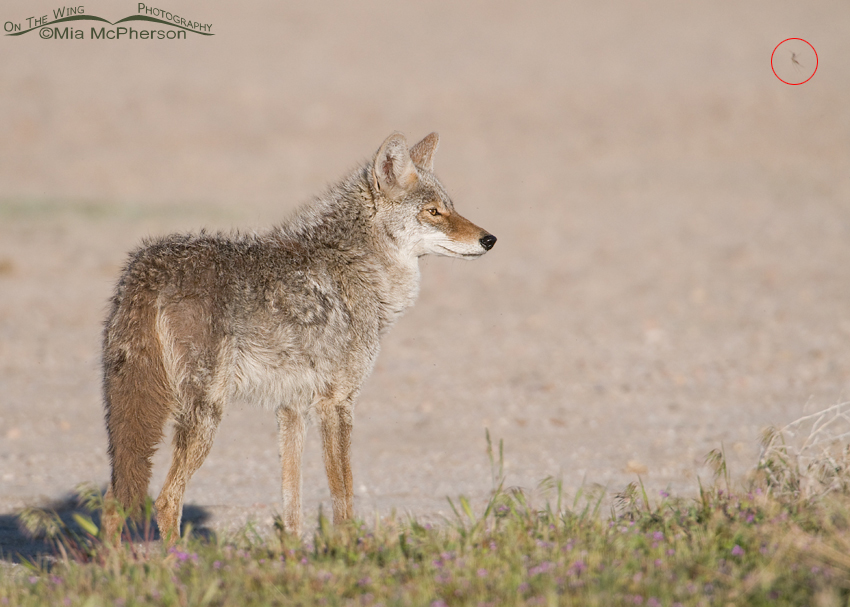 Coyote with a Midge in the frame
Coyote with a Midge in the frame
Midges can show up in images unexpectedly as one did in this image of a Coyote I photographed a few days ago on Antelope Island. At the time I took this I had no idea there was a visible midge in the upper right hand corner. I also have plenty of bird images where midges can be seen flying next to a bird or where they are floating on the water.
The midges aren’t to be confused with the biting gnats (no-see-ums) that are out biting every unsuspecting person on Antelope Island right now, no-see-ums are much smaller than these midges.
Mia
Click here to see more of my insect and spider images.


Thanks for all of your comments.
Great photos, Mia!
The midge tornado is impressive! I would definitely prefer to be surrounded by them rather than biting no-see-ums!
We are no stranger to no-see-ums around here… Although we don’t get the midges that I know of … at least not in enough quantity so you’d see them. We get little black flies. Little black flies seem to be fascinated with my sun glasses. For some reason they cluster on the glasses and I have to swipe them away every so often. Fortunately on windy days there is less of this. But for all the beauty and grandeur of this time of you, a few bugs are worth it for sure.
Really interesting to see them up close. When I saw that midge tornado it reminded me of the swarm intelligence of some birds but applied to insects. So even these tiny beings need to complete their life cycles so the larger creatures can continue their existence. Everything is so interwoven.
impressive descriptions and pictures, thanks a lot mia, it s well done and presented
I recently moved to Brigham City, which is near the Bear River National Bird Refuge; I have been seeing lots of these things lately but I thought they were Mosquitos. Thanks for great photos and information, Mia. I learn so much from your posts.
We do complain about our bugs in the wild but honestly it is what allows us to have the variety of wildlife we do. They can indeed be irritating to said photogs tho!
Wow. You caught one midge! Awesome!
I remember seeing them the first time and freaking out.
Now……don’t bother us.